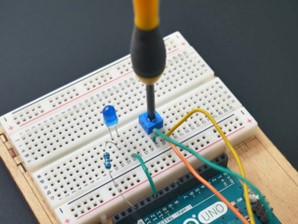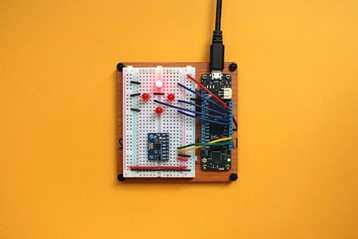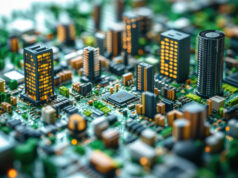Seng Tiong Ho is an entrepreneur and academic professor who studies lasers and photonic technology. In the following article, Seng Tiong Ho explains that with the many potential uses, what makes photonic integrated circuits (PICs) so advantageous and how are they used throughout various industries.
Thanks to their impressive capacities, photonic integrated circuits (PICs) have become a crucial component of the tech industry. Essentially miniaturized optoelectronic systems, they can be utilized to regulate light signals and are ideal for multiple applications including data transmission and telecommunications. Seng Tiong Ho says that PICs far surpass traditional electric-based solutions in terms of effectiveness and efficiency making them an invaluable asset across a range of sectors.
What are Photonic Integrated Circuits
Unveiling a new realm of possibilities, PICs are minuscule optoelectronic components that direct and modulate light signals. These devices integrate several photonic functionalities into one unit, like waveguides, filters, modulators, detectors, and amplifiers to name just some. Seng Tiong Ho says that through the use of these intricate designs, they can process complex optical data with ease – giving you unprecedented control over how light travels through your system!
Advantages of Photonic Integrated Circuits
Seng Tiong Ho says that PICs offer several advantages over traditional electric-based solutions, including:
- Speed: PICs offer lightning-fast data processing which makes them perfect for applications like high-speed communication and optical computing. This speed is a tremendous asset to any data center as it enables them to communicate and process vast amounts of information quickly.
- Efficiency: PICs are the perfect solution for low-power applications, like sensors and portable devices, as they consume much less energy than electric alternatives. Not only does this minimize power consumption but also dramatically amplifies battery life in such cases. Additionally, Seng Tiong Ho says that PICs don’t give off substantial heat compared to electrical components – allowing them to be employed in environments where traditional solutions would overheat.
- Cost: Thanks to innovative fabrication technology and smaller, more efficient components, PICs are cost-effectively competing with electric components on the market. This evolution in production methods has enabled a decrease in prices for these goods that was previously unimaginable.
Applications of Photonic Integrated Circuits
PICs can be used in a variety of applications that require the transmission and processing of light signals, such as:
- Telecommunications: PICs are often used to transmit data between nodes or devices. This may include fiber-optic cables for internet connections or wireless communications between devices. Seng Tiong Ho says that these PICs can also be used to modulate signals for longer-distance communication.
- Data centers: PICs are now being used in data centers to send and receive large amounts of information quickly. This allows them to process data faster than traditional electric components, resulting in improved efficiency and performance.
- Sensors: PICs are often used in various types of sensors, such as environmental and medical sensors. These can be beneficial due to their low power consumption and ability to detect changes in light levels accurately.
- Optical Computing: PICs are being developed for use in optical computing systems, which are capable of processing data faster than traditional computers. This could be used in a range of applications, such as artificial intelligence or machine learning.

Should Businesses Invest in Photonic Integrated Circuits
PICs are becoming increasingly popular among businesses due to their many advantages over traditional electric-based solutions. They offer amazing opportunities for improving efficiency, speed, and cost reduction that make them an attractive option when striving to optimize performance.
Even though PICs offer many benefits, Seng Tiong Ho says that it is essential to think about the associated cost and implementation process. Any business looking to leverage the advantages of PICs should seek expert advice first before investing in order to make sure their money will be well spent. Otherwise, they may discover that the investment required for installation outweighs any potential returns.
Will Photonic Integrated Circuits Replace Traditional Electronics
Despite the numerous advantages PICs provide compared to traditional electronics, a full replacement is unlikely in the near future. While specific applications like data centers and optical computing may benefit from such technology, other ones might still require electric components. Moreover, many organizations lack the financial means necessary to make this transition happen.
Seng Tiong Ho says that companies should thoughtfully evaluate the pros and cons of each option before deciding which technology to implement, thereby ensuring they get the most favorable outcome for their application.
Final Thoughts
Ultimately, PICs are an exciting and emerging technology that could have a significant impact on the way we process and transmit data. With their numerous advantages, businesses should certainly consider incorporating them into their operations if it is feasible to do so.








